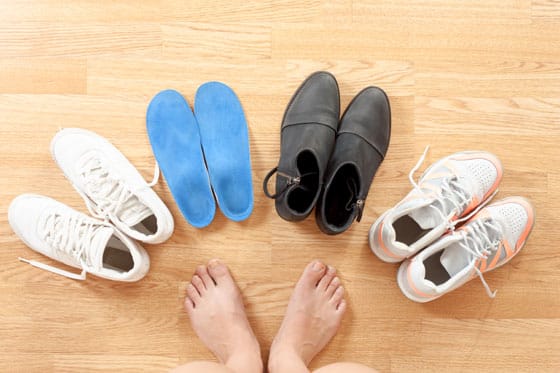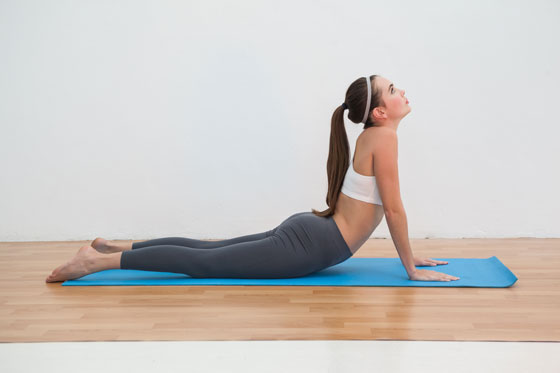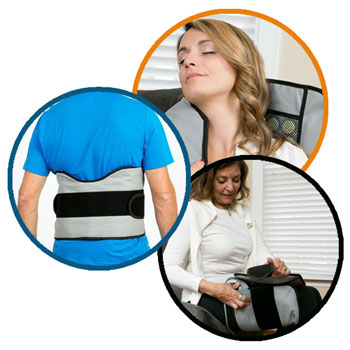
Persistent back pain can make life difficult. Everyday activities can become a challenge. When the pain does not go away, horizontal back decompression at home may provide a solution.
What Is Horizontal Back Decompression?
Horizontal back decompression is a type of spinal decompression designed to help stretch the spine and relieve back pain. When you lay horizontally on a decompression device, the pressure is taken off the spinal discs.
Your spine includes a series of these discs, which provide cushioning between your spine and bones. Relieving pressure may also help herniated or bulging discs retract and reduce pressure on nerves.
The most used methods of decompression include:
- Surgical decompression
- Non-surgical decompression
- Inversion tables
There is a total of 23 discs in your spine. Five of the discs are in your lower back, which is called the lumbar region. The discs act as shock absorbers when moving your body. Due to natural wear and tear, heavy work, injury, and improper lifting, the discs can become torn, herniated, or deformed.
When these issues occur, you may experience extra pressure between two or more discs. The extra strain on the discs may lead to back stiffness or pain. If the issue is not treated, you may also develop symptoms such as difficulty sleeping, fatigue, and depression.
Spinal decompression aims to resolve these issues by slowly stretching the discs. The decompression helps relieve pressure and pain while allowing the discs to repair.
Surgical decompression is often used for severely herniated discs and other major spinal disc problems. With surgical decompression, doctors remove portions of bone, vertebrae, and the disc.
As with most invasive surgical procedures, surgical decompression requires a recovery period and includes several possible side effects. There is a risk of blood clots, bleeding, and permanent nerve damage.
Non-surgical decompression therapy may be performed at home or under the supervision of a medical professional. In a clinical setting, a computer-controlled machine may be used to stretch the spine. Doctors can slowly decompress the spine with precise control.
There are also many home decompression devices. These devices are often tables that are designed to provide the same benefits provided by non-surgical decompression. You may use inversion tables, decompression benches, or stretching devices to relieve your pain.
Inversion Therapy vs. Horizontal Back Decompression
Inversion tables provide a type of spinal decompression. With an inversion table, you lay on the table with your feet strapped to the upper end of the table. The table is then inclined with your head lower compared to your feet.
The inclined position is believed to help reduce pressure on spinal discs and nerves. However, these tables have also been connected to various negative health effects.
The inversion table may increase blood pressure, cause headaches, and increase pressure in your eyes. There have even been cases of blurred vision and bleeding in the retina.
There are a variety of devices for horizontal back decompression at home. Besides inversion tables, you may use orthopedic back stretchers and back traction benches or tables.
The orthopedic back stretchers and back traction tables typically involve horizontal back decompression. This may be a safer option for home use as the decompression is gentler compared to the inversion table.
However, inversion tables have helped many people alleviate their back pain. As with any device, it is important to use caution. You should also consider working with your doctor to treat severe cases of back pain or discomfort.
How Does a Spinal Decompression Table Work?
The spinal decompression tables and benches are also called traction tables or benches.
Instead of lying in an inclined position, you lay horizontally on the table. The decompression session may last 30 to 45 minutes and may need to be repeated to help alleviate pain.
With some of these devices, you strap your feet into a footrest and hold onto bars positioned near your head. If the device is mechanical, you may use your own force to create traction and gently stretch the spine.
There are also electronic decompression tables. The electronic tables are computer-controlled and typically used for professional non-surgical decompression therapy sessions.
With the electronic components, medical professionals can monitor the amount of decompression and other important details. They can also use sensors to monitor muscle resistance, which helps doctors avoid applying too much decompression.
If you decide to perform horizontal back decompression at home, you may not have access to advanced monitoring. Luckily, home decompression tables and traction tables are designed for use without medical supervision.
These devices allow you to decide how much traction or decompression you create. When you stretch out on the table, you should feel your spine.
Using these devices, you can safely stretch out your back and feel the relief as the added pressure is removed.
Benefits of Horizontal Back Decompression
The primary benefit of spinal decompression is to relieve pressure and help repair your spinal discs. While it is intended for chronic back pain, it may also offer relief for those suffering from minor back or neck pain.
You may need to seek professional assistance for debilitating cases of chronic back pain. However, home decompression still offers several advantages compared to surgical decompression, including:
- Non-invasive
- Short sessions
- Short recovery
- No medications
Using a horizontal decompression table is a non-invasive solution for treating back pain and other conditions connected to your spinal discs. With your own decompression table, you may not need to undergo expensive surgery.
A typical decompression session may last 30 to 45 minutes. When you first start out, you should start slowly, beginning with the lowest decompression settings and shorter sessions.
However, you have complete control over how much time you spend on the table. You can stretch out for a few minutes before and after work.
Recovery is also much faster compared to surgery. Unlike surgery, you are not bedridden. While you may need to limit your physical activity while you recover, you can maintain your regular routine.
Home back decompression does not require medications. You simply lay on a table or bench and stretch your back. If you currently take pain medications, the relief that you experience may help you reduce your dosage or stop taking medication.
Alternative Methods for Back Decompression at Home
Spinal decompression is typically considered a safe option for those who want to relieve some of the pressure on their spines. The various devices designed to offer decompression are often effective at reducing chronic and acute back pain.
There are also decompression techniques that you can perform at home without any equipment. With the right stretches or exercises, you can naturally relieve pressure and stretch out your body.
Performing a few basic stretches helps relieve pressure. Start with a standard cat stretch. Position yourself on your elbows and knees. Stretch your arms forward on the ground while keeping your hips in the air.
Tighten your abdominal muscles and raise your lower back. This should help relieve some pressure.
Another stretch requires you to lay on your back and bring your knees toward your chest. Grab your legs behind the knees and breathe into your chest. This pose helps elongate the spine and provides moderate decompression.
Touching your toes is another useful exercise for stretching the spine. You may also consider reducing your workload, stop lifting heavy objects, and take it easy while your back recovers. You may even perform these stretches before or after using a decompression device.
Conclusion: Should You Use Back Decompression?
If you suffer from lower back pain, spinal decompression may offer an effective treatment. Before purchasing a home decompression device, you should consider the pros and cons of treating the issue on your own.
When you suffer from chronic back pain, seeking professional medical assistance is the recommended option. You can work with your doctor to determine the best treatment.
In some cases, your doctor may recommend spinal decompression therapy. Depending on the severity of your condition, surgical or non-surgical decompression may offer the right solution.
When seeking medical treatment for back pain, you should stick with the treatment plan that you and your doctor devise. If you plan to try horizontal back decompression at home, you should discuss your plans with your doctor.
For those suffering from acute back pain or added pressure due to heavy lifting or exercise, home decompression is a safe option. However, there are precautions that you should take.
Remember to start slowly. If the decompression table or traction table provides multiple settings, start with the lowest option.
You should also stop decompressing if you experience any additional pain, especially a sharp, stabbing pain. You may be placing more pressure on your spine.
In the end, home decompression may not provide the best treatment option for everyone suffering from back pain. It is primarily recommended for those suffering from acute pain or as part of a treatment plan created with the help of a medical professional.
If you want to stretch your back out after a long day, consider using horizontal back decompression. If your condition is severe and debilitating, ensure that you visit a doctor.











